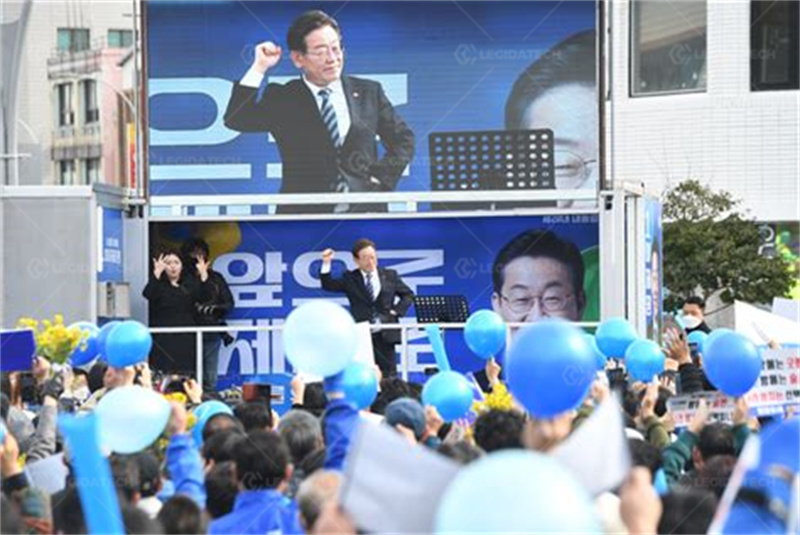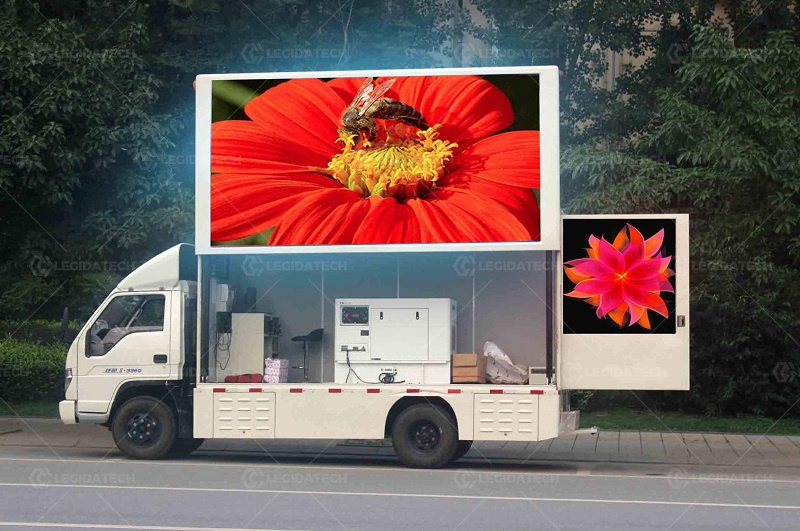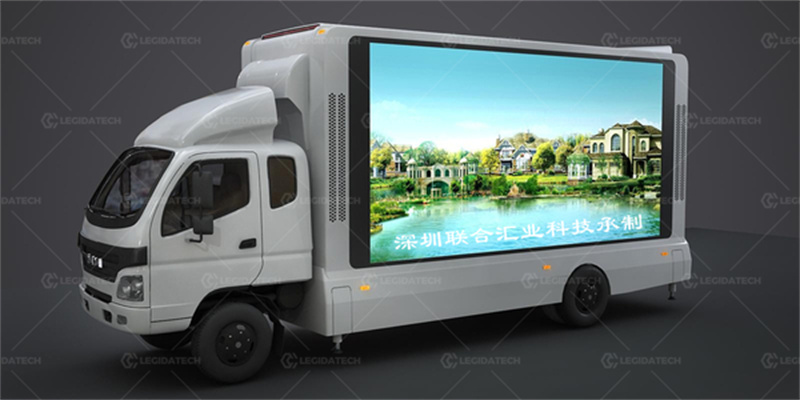Ultimate Guide to Mobile LED Billboards: From Strategy to Execution
Introduction: Mobility as a Game Changer
During South Korea’s 2025 presidential race, Lee Jae-myung’s campaign deployed digital trucks to broadcast live rallies across Seoul. A defining moment—footage of him climbing a protest barrier, displayed on mobile screens—resonated powerfully with young voters.
This tactic proved decisive in his victory, demonstrating how mobile billboards turn conventional advertising into captivating, unavoidable narratives.

Understanding Mobile LED Billboards
Mobile billboards are digital displays (typically LED) mounted on vehicles or portable units. They deliver dynamic content in high-traffic zones, offering precision targeting static billboards can’t match—like circling sports arenas during events. Key features include:
- High-resolution LEDs for visibility in all lighting
- GPS-powered route planning for peak-traffic targeting
- Cloud-based content management for real-time updates
- Hybrid power systems for 8–12 hours of continuous operation

3. Key Advantages
- 70% higher brand recallthan traditional static ads
- Precision geofencing for targeting demographics, neighborhoods, or events
- 30–50% lower cost per impression than premium static billboards
- Real-time adaptability for flash sales or QR-code campaigns
- Immunity to digital ad-blocking and viewer fatigue
4. Types of Mobile LED Billboards
- Vehicle-mounted solutions: Trucks/vans (10–20 sqm), eco-friendly vehicles, bus-body ads
- Portable units: Trailers for events and kiosks for pop-up promotions
- Autonomous technologies: Drone-mounted displays and self-driving advertising robots

5. How Does Mobile LED Billboard Work
- Content upload: Seamlessly load assets via cloud CMS (e.g., Broadsign)
- Geo-scheduling: Use GPS to dispatch screens to targets at optimal times
- Intelligent operation: Sensors adjust brightness; content loops during transit
- Performance tracking: GPS monitors exposure; QR codes measure real-time conversions

6. Mobile LED Billboards vs. Traditional Billboards
| Factor | Mobile Billboards | Static Billboards |
| Coverage | Dynamic, follows crowds | Fixed-location, static |
| Daily Cost | ¥500–1,500 | ¥1,000–15,000+ |
| Content Update | Instant (minutes) | Lengthy (weeks) |
| Recall Rate | 83% | 45% |
7. Mobile Ad Truck Rental Process
Step 1: Define Goals
- Identify your target audience (e.g., 3km radius demographics)
- Set a weekly budget of ¥3,000–15,000
Step 2: Choose Vehicles
- Standard LED truck: ¥800/day (ideal for commercial zones)
- Premium wrapped van: ¥1,200/day (luxury branding)
Step 3: Monitor & Optimize
Use real-time platforms (e.g., ADstruc) to adjust routes daily based on exposure data.
8. Cost Analysis & Case Study
Expenses:
- Truck rental: ¥500–2,500/day (40% premium in cities)
- Video production: ¥200–1,000/clip (avg. ¥600 for 15s animation)
- Operations: Fuel (¥50–150/day) + staff (¥120–200/day)
Pizza Chain Results (¥8,000 campaign):
- 28% sales lift • ¥0.64 per conversion • 317% ROI
9. Equipment Lifecycle Management
- Years 0–2: Aerospace-grade aluminum frames, IP65-rated LEDs; 1,000+ hour stress tests
- Years 3–8: Replace LED panels every 18–24 months; quarterly software updates; spare parts cut repair costs by 30%
- Beyond 8 years: 85% recyclable materials; solar units last 10+ years; 15% trade-in discounts
10. Operational Guidelines
For Buyers:
- Technical specs: ≥7,500 nits brightness, P4–P10 resolution
- Connectivity: 5G-enabled electric vehicles (save ¥2,000+/month on fuel)
- CMS compatibility: Verify Signagelive integration
For Operators:
- Safety: Max speed 60km/h (sudden braking damages screens)
- Content: Keep ads under 15 seconds to prevent driver distraction
- Compliance:
- US: Daily FMCSA logs
- EU: GDPR consent protocols
- China: Traffic authority permits
Pro Tip: Residential campaigns (6–7 PM) achieve 40% higher QR scans. Pair with street teams for max impact.
11. LEGIDATECH: Factory-Direct Supplier
1. Factory-Direct Pricing
Eliminate middlemen markups—save 40–60% vs. branded distributors.
2. Military-Grade Durability
- IP67 rating: Waterproof, dustproof, operational in extreme weather
- 7,500–10,000 nits brightness for sunlight visibility
- Aerospace aluminum frame withstands 60 mph winds
3. Cutting-Edge Tech
- 5G & cloud compatibility for real-time updates via Signagelive/Broadsign
- Smart routing: GPS-optimized routes with real-time traffic avoidance
- Energy-saving mode extends battery life by 35%
4. Customization at Scale
- Screen sizes: 4–60 sqm with modular assembly
- Pixel pitches: P3.9, P4.8, P6.25, P10 for indoor/outdoor use
- Vehicle platforms: Electric trucks, trailers, drone carriers
12. Conclusion: The Future of Attention
Mobile LED billboards are evolving into AI-powered engagement hubs. As seen in President Lee’s campaign, they blend hyper-targeted advertising, measurable ROI (via QR codes/GPS), and sustainability (60% lower carbon than print ads).
Projections show 35% of outdoor advertising will be mobile by 2026—driven by drones and autonomous robots. For brands, they’re not just ads but powerful tools for mass audience engagement.

13. Q&A
Q2: Can screens withstand heavy rain or desert heat?
A: Yes. IP67-rated screens pass MIL-STD-810G testing:
- Operates at -30°C to 60°C
- Withstands sandstorms (80 km/h winds) and heavy rain (200 mm/h)
- 320+ units deployed in Dubai/Saudi Arabia since 2023
Q3: How long after payment for production?
A:
- Standard: 15 working days (MOQ: 5 units)
- Expedited:
- 10 days (+15% fee)
- 7 days (+30% fee)
Includes LED assembly, vehicle integration, 72-hour stress testing.
Q4: Optimal daytime brightness?
A: 7,500–10,000 nits based on global data:
| Location | Recommended Brightness |
| Tropical sunlight | 9,000–10,000 nits |
| Cloudy areas | 7,500–8,000 nits |
| P6.25 panels auto-adjust via light sensors |
Q5: Content design & CMS setup help?
A: Yes:
- Free design templates for Photoshop/Canva
- Pre-installed CMS (Signagelive/Broadsign) with 1-hour training
- QR code integration for real-time tracking
Success story: 18.7% scan rate in a Mexican election campaign.
Q6: Lifespan & maintenance?
- Lifespan: 100,000+ hours (≈10 years with 10-hour daily use)
- Maintenance:
- LED modules: Replace every 3 years ($35/module)
- Annual inspections: Free for first 3 years
- 92% of aluminum/copper components are recyclable.
Q7: Rent devices for passive income?
A: Yes. Top clients earn ¥1,200–4,500/week:
- Events: Concerts/sports ($450/day)
- Regulatory support: US/EU compliance assistance
- Profit margin: 62% on average after fuel/driver costs


